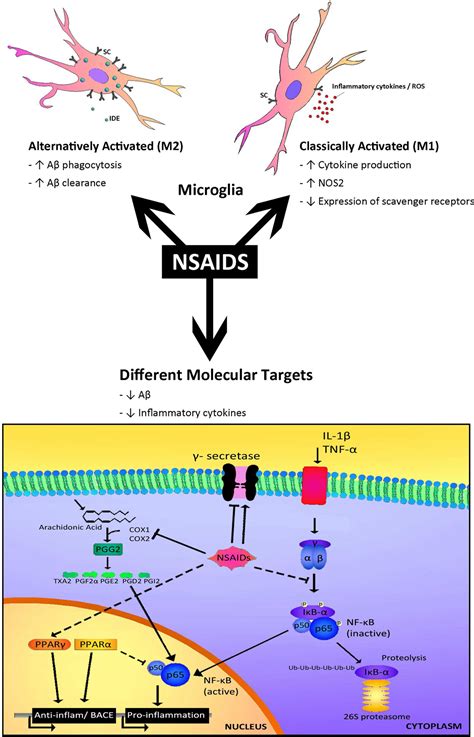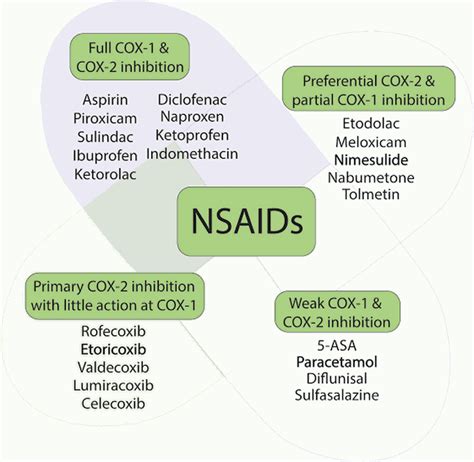Intro
Discover the ultimate Nonsteroidal Anti-Inflammatory Medication Guide, exploring NSAIDs, pain relief, inflammation reduction, and side effects management, helping you make informed decisions about over-the-counter and prescription medications.
The use of nonsteroidal anti-inflammatory medications, commonly referred to as NSAIDs, has become a staple in the treatment of various forms of pain and inflammation. These medications are widely available, both over-the-counter and by prescription, and are used by millions of people around the world. Despite their widespread use, many individuals are not fully aware of the benefits and risks associated with NSAIDs, or how to use them safely and effectively. Understanding the basics of NSAIDs, including their mechanisms of action, potential side effects, and proper usage guidelines, is essential for anyone considering the use of these medications.
NSAIDs are a diverse group of medications that share a common mechanism of action, which involves the inhibition of enzymes responsible for the production of prostaglandins. Prostaglandins are hormone-like substances that play a key role in the development of pain and inflammation in the body. By blocking the production of prostaglandins, NSAIDs are able to reduce inflammation and alleviate pain. This makes them useful for the treatment of a wide range of conditions, including arthritis, headaches, and muscle strains.
The popularity of NSAIDs can be attributed to their ease of use and effectiveness. They are available in various forms, including tablets, capsules, and topical creams, making them convenient for individuals with different preferences and needs. Additionally, NSAIDs are often less expensive than other types of pain medications, which has contributed to their widespread adoption. However, it is essential to remember that NSAIDs are not without risks, and their use should be carefully considered and monitored to minimize the potential for adverse effects.
How NSAIDs Work

Benefits of NSAIDs
The benefits of NSAIDs are numerous and well-documented. They are effective in reducing pain and inflammation, making them a valuable treatment option for individuals with conditions such as arthritis, tendinitis, and bursitis. NSAIDs are also useful for the treatment of acute injuries, such as sprains and strains, and can help to reduce fever and alleviate headaches. Additionally, NSAIDs have anti-inflammatory properties, which can help to reduce swelling and promote healing.Types of NSAIDs

Potential Side Effects of NSAIDs
While NSAIDs are generally safe and effective, they can cause potential side effects, particularly when used for extended periods or in high doses. Some common side effects of NSAIDs include: * Gastrointestinal problems, such as stomach ulcers and bleeding * Kidney damage * Increased risk of heart attack and stroke * Allergic reactions * Skin rashes * Liver damage * Interactions with other medicationsSafe Use of NSAIDs

Interactions with Other Medications
NSAIDs can interact with other medications, increasing the risk of adverse effects. Some medications that may interact with NSAIDs include: * Blood thinners, such as warfarin * Diabetes medications, such as metformin * Blood pressure medications, such as beta blockers * Steroids, such as prednisone * Antidepressants, such as selective serotonin reuptake inhibitors (SSRIs)Alternatives to NSAIDs

Conclusion and Future Directions
In conclusion, NSAIDs are a valuable treatment option for individuals with pain and inflammation. While they are generally safe and effective, their use should be carefully considered and monitored to minimize the potential for adverse effects. By understanding the benefits and risks of NSAIDs, individuals can make informed decisions about their use and explore alternative treatment options when necessary. As research continues to evolve, it is likely that new and safer NSAIDs will be developed, providing individuals with even more effective treatment options for managing pain and inflammation.What are the most common side effects of NSAIDs?
+The most common side effects of NSAIDs include gastrointestinal problems, such as stomach ulcers and bleeding, kidney damage, and increased risk of heart attack and stroke.
Can I take NSAIDs with other medications?
+It is essential to inform your doctor about any other medications you are taking before using NSAIDs, as they can interact with other medications and increase the risk of adverse effects.
Are there any alternative treatment options to NSAIDs?
+Yes, there are several alternative treatment options available, including acetaminophen, opioid pain medications, muscle relaxants, topical pain relievers, and alternative therapies, such as acupuncture and massage.
We hope this comprehensive guide to NSAIDs has provided you with valuable information and insights into the benefits and risks of these medications. If you have any further questions or concerns, please do not hesitate to comment or share this article with others. Additionally, we invite you to explore other resources and articles on our website, where you can find more information on various health topics and treatment options.
